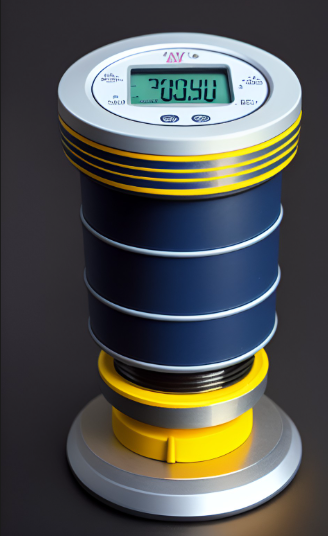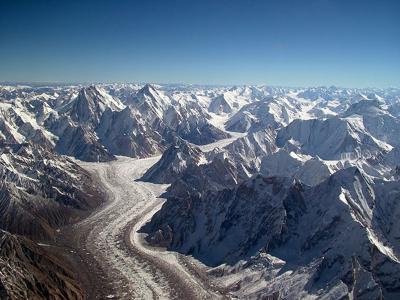- Air Homepage
- Weather Equipment
- Barometric Pressure Transducer
The Fascinating World of the Barometric Pressure Transducer
More about atmospheric instruments.
Using a barometric pressure transducer, you can get an electronic signal that tells you how much pressure is in an area.
Prepare for an electrifying exploration of barometric pressure transducers! These modest devices help us predict weather, guide planes, and ensure industrial safety.
Transducers measure barometric pressure for weather forecasting, aviation, and industrial safety. They help us predict storms, guide planes, and monitor the environment.
They're indispensable across multiple industries because of their precision and reliability. In this article, we'll see how barometric pressure transducers affect our daily lives.
Weather, Aviation, and Industry's Unsung Heroes
Discover the enigmatic world of meteorology, air travel, and environmental monitoring. The compact form of barometric pressure transducers promises both knowledge and excitement in an adrenaline-pumping adventure.
Sensors in the transducer vibrate when pressure changes. You guessed it, a barometric pressure transducer uses this feature to measure atmospheric pressure. It's used in weather monitoring systems, aviation, and industrial processes that need precise atmospheric pressure measurements.
 Sensitive instrument
Sensitive instrumentDiscover how barometric pressure transducers decode atmospheric mysteries! A storm might be lurking when the barometric pressure takes a dive - they're the heroes of weather monitoring.
That's just the tip of the altimeter! The transducers help pilots gauge altitude, where atmospheric pressure turns into flight level.
Transducers keep an eye on sealed containers, making sure they're airtight fortresses or orchestrating material flow. Sensors are the chameleons of the sky, altering their vibrations with the weather. These energy-transforming wizards, known as transducers, don't miss even the tiniest pressure shift.
First, a bit about pressure
A barometric pressure transducer gets its input from changes in the surrounding air pressure. Let's look at where atmospheric pressure comes from before we see how to measure it.
Air pressure is the total weight of air molecules acting on a unit area. As you might expect, the number of air molecules above a certain point is relatively high at sea level, and the number of molecules above your specific point will decrease as the instrument's altitude increases.
When you were at sea level, many air molecules were above you. And the pressure decreases as you move upwards, since it depends only on the particles above you. Also, air molecules gain more energy and move faster when heated, so the same number of air molecules will occupy more space.
As the air column expands, fewer molecules are above each unit area because the amount of distance between the planet's surface and the top of the atmosphere remains the same. As a result, pressure drops in response to surface heating. It's proportional to how many molecules are above you.
The atmosphere is a fluid medium, so it doesn't behave uniformly over every point on the earth's surface. Throughout the atmosphere and at all altitudes, there are areas of higher and lower pressure compared with nearby points at the same altitude.
A great big Example
An eye of a hurricane, for example, has low surface pressure. Hurricanes have the lowest surface pressure measured anywhere on earth. In the middle of a powerful storm, this low pressure causes air to move inwards. The low pressure pulls air towards the center of the storm, creating strong winds.
Wind currents are changed by Earth's rotation, by means of a virtual force called the Coriolis force. Earth's rotation and the atmosphere's inertia cause the Coriolis force. By deflecting air, the Earth's rotation changes its path from a straight path to a curved path, which changes the wind's direction.
It also causes air to moves in opposite directions in the northern and southern hemispheres, resulting in the formation of air currents and weather patterns. For example, due to the Coriolis force, currents in the northern hemisphere flow in a clockwise direction, while in the southern hemisphere, they flow counterclockwise. In a hurricane, the air moving inwards moves in a curved path.
As the air spins around the eye, it creates a circular pattern. And at the edges of the eye, you'll find the eye wall, or the most intense part of the storm. As warm, moist air rises from the ocean, it cools, condenses, and creates a powerful updraft in this region. That is why these storms grow over the ocean.
What about the Barometric Pressure Transducer?
People care about barometric pressure transducers because they're used in so many industries. Here are a few examples:
- Weather forecasters use barometric pressure measurements to predict changes in weather patterns and issue severe weather warnings.
- Altitude information is critical for flight planning and navigation, so pilots and aviation personnel use barometric pressure transducers.
- To ensure that sealed containers are properly sealed and that materials inside are handled safely, industrial manufacturers and engineers use barometric pressure transducers.
- Barometric pressure transducers are used in environmental monitoring applications to study changes in atmospheric pressure over time.
Atmospheric pressure is measured by mercury column barometers. Now we have the transducer, which gives even more accurate pressure readings. In general meteorology and air travel, transducers will determine pressure.
We can get a lot of insight into atmospheric pressure dynamics by using computers to make complex calculations based on conversion factors.
The barometric pressure transducer is an essential tool for measuring and monitoring atmospheric pressure. The accurate measurement of atmospheric pressure provided by barometric pressure transducers is crucial for a variety of industries and applications, and many professionals rely on it. We'll keep an eye on it.
The unsung heroes of weather forecasting and air quality
The silent heroes of our atmosphere are barometric pressure transducers. In weather forecasting, they detect atmospheric pressure shifts that herald storms or clear skies. Using their data, we can predict weather patterns and severe weather.
Their prowess doesn't stop there. These transducers help monitor atmospheric pressure changes, which are crucial to understanding pollution dispersion.
Weather experts and air quality experts can make life-saving decisions with them. Our skies and air quality are protected by these unassuming devices.
Go back from Barometric Pressure Transducer to the Weather Equipment webpage or visit the Stuff in the Air homepage.
Search this site for more information now.
What is a barometric pressure transducer and why do you need one?
Accurate calculation of atmospheric pressure is a key ingredient in making weather predictions. You can obtain good pressure measurements with a barometric pressure transducer.
Do you have concerns about air pollution in your area??
Perhaps modelling air pollution will provide the answers to your question.
That is what I do on a full-time basis. Find out if it is necessary for your project.
Have your Say...
on the StuffintheAir facebook page
Other topics listed in these guides:
The Stuff-in-the-Air Site Map
And,
Thank you to my research and writing assistants, ChatGPT and WordTune, as well as Wombo and others for the images.
GPT-4, OpenAI's large-scale language generation model (and others provided by Google and Meta), helped generate this text. As soon as draft language is generated, the author reviews, edits, and revises it to their own liking and is responsible for the content.



New! Comments
Do you like what you see here? Please let us know in the box below.